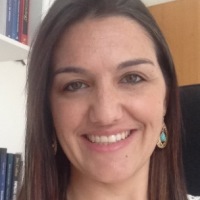IVF is a constantly changing field, with advancements in medical technologies changing the landscape for couples seeking to start their families.
We checked in with three renowned IVF and fertility experts around the world to get their answer to the question: What’s New In IVF For 2016 And Beyond?
We think you’ll enjoy seeing their answers below.
Professor Dr. Geeta Nargund, Medical Director, CREATE Fertility

“Advances in vitrification (fast freezing) and OHSS-free IVF have helped to make egg freezing more successful and safer for women who choose to preserve their fertility.
In February 2015, the law in the UK was changed to allow mitochondrial donation for parents carrying mitochondrial disease. These parents can now undergo IVF to produce embryos and then healthy mitochondria from a donor is introduced into the embryo. The result is that the baby does not inherit the mitochondrial disease.
This treatment is currently limited strictly to those who suffer from medical conditions linked to mitochondria. However, early stage research into the relationship between numbers of mitochondria and quality of resulting embryos is being carried out to assess whether other women and couples undergoing IVF may benefit from donation.
While there are few definitive conclusions to be drawn at this stage, this would nonetheless be an exciting step.”
Dr. Jhenifer K. Rodrigues, PhD, Director Brazilian Oncofertility Consortium, Consultant In Vitro Consultoria

“I am very excited about the progress of the ovarian tissue cryopreservation and follicle in vitro maturation as an alternative for cancer patients who wish to preserve their fertility.
The evolution of the Assisted Human Reproduction Techniques (ART) in the last decade has allowed the improvement of the reproductive function maintenance strategies in female patients undergoing treatment of neoplastic diseases, such as cryopreservation of embryos and gametes.
But when it’s young prepubertal patients, options to cryopreserve mature oocytes and embryos becomes unavailable. An alternative to these patients could be cryopreservation of ovarian tissue and retransplantation after thawing the sample. The use of follicle in vitro maturation rule out the possibility of cancer recurrence after retransplantation, especially in the case of an ovarian cancer.
I believe the ovarian tissue cryopreservation cease to be experimental very soon, since has shown excellent results. And much more progress on follicle in vitro maturation development will be done this year. This will affect positively the ART world.”
Dr. Aimee Eyvazzadeh, MD, MPH

“Gene editing is going to be one of the most debated IVF technologies we will see in our lifetime.
I predict and hope we will see more tools to properly diagnose and treat infertility. I look forward to the day that patients aren’t told that they have “unexplained” infertility. I would like to see that every patient be given a diagnosis and a treatment plan geared toward the specific diagnosis. Future advancements that we will hopefully see would be as follows:
We can currently look at sperm aneuploidy, and DNA fragmentation but are yet to be able to look at the DNA methylation profile of a semen sample. This would be groundbreaking because we would be able to then predict the fertility status and the likelihood of the sample giving rise to good-quality embryos during IVF.
DNA holds so much diagnostic information for infertile couples. We will be learning more about different gene mutations that not only affect women but also men.”
For further information or to schedule a free IVF consultation with our specialists on the Sunshine Coast or Bundaberg, please phone 1300 FERTILITY.

